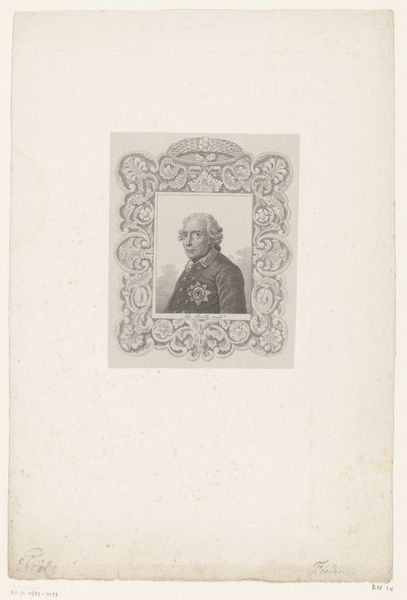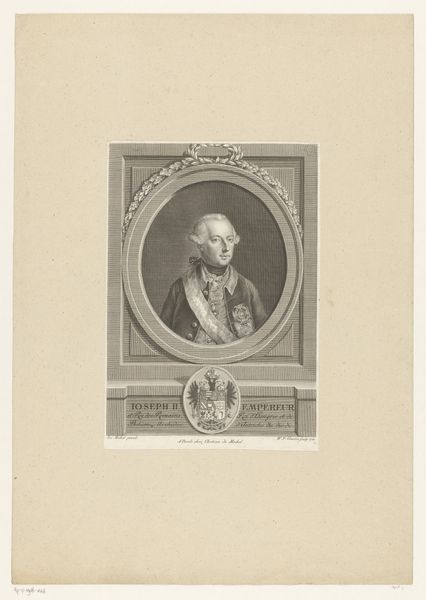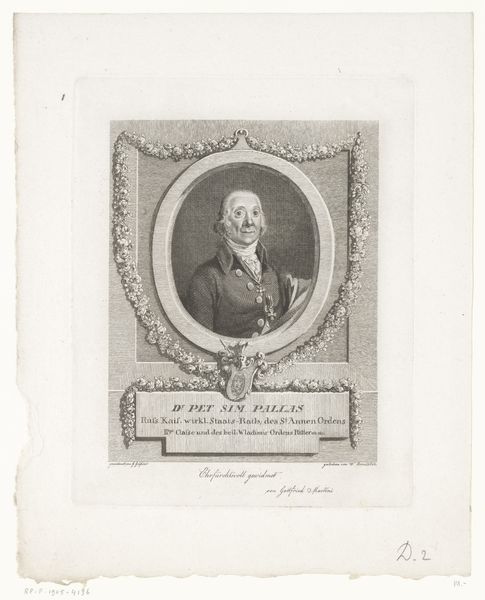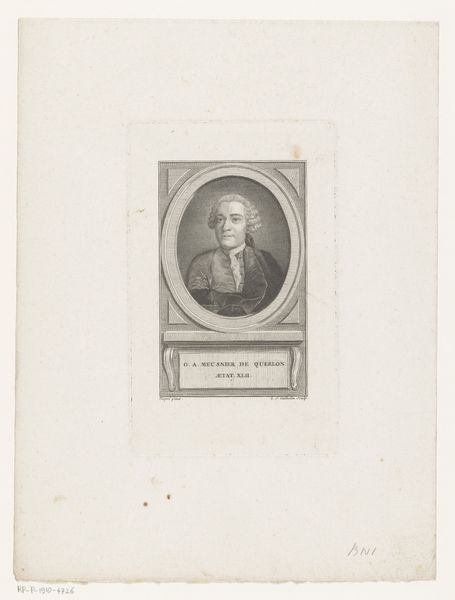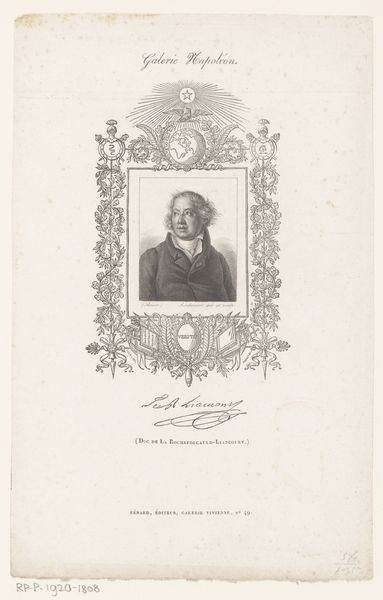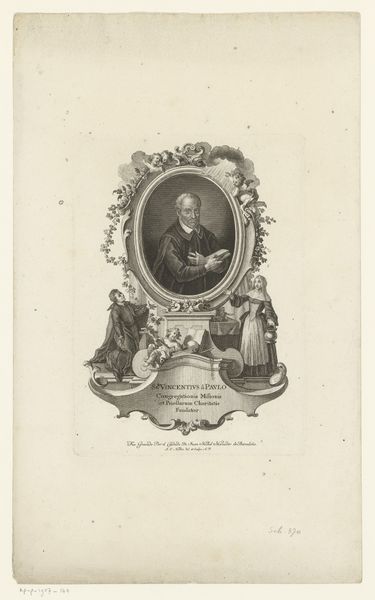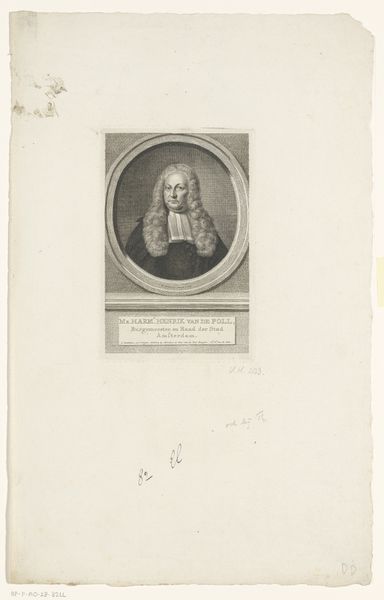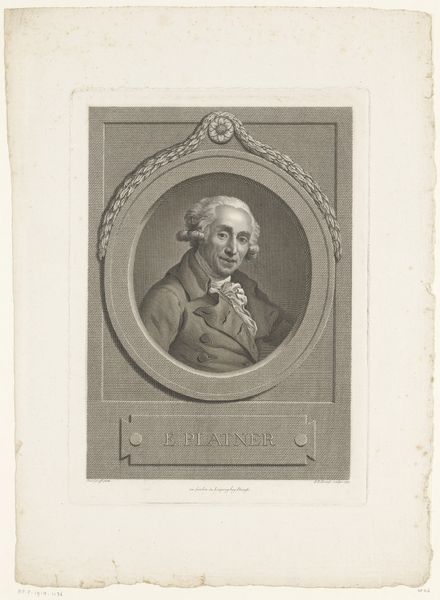
drawing, print, paper, engraving
#
portrait
#
drawing
#
neoclacissism
# print
#
paper
#
form
#
line
#
academic-art
#
engraving
#
realism
Dimensions: height 272 mm, width 171 mm
Copyright: Rijks Museum: Open Domain
Curator: This print from 1829, created by Jean Alexandre Allais, is a portrait of Charles Louis de Marbeuf rendered in the neoclassical style. It’s a detailed engraving on paper, a striking example of early 19th-century portraiture. Editor: The precision is amazing, isn’t it? The detail in his powdered wig alone hints at a time obsessed with meticulous representation and clearly communicates importance and prestige. Curator: Absolutely. The framework around the portrait, filled with symbols like the torch and eagle, all speak to Marbeuf’s standing. This work must be understood in the context of a society undergoing major upheaval after the Revolution. Academic art had a resurgence after years of conflict. Editor: I find myself focusing on that sash and star he wears. What can you tell us about their symbolic significance? Is it a political statement or strictly a display of honor? Curator: The sash is most likely part of an honorific order, probably connected to the French monarchy. Post-revolution, in France and throughout Europe, images of the elite were carefully controlled. This could signal a reaffirmation of order and tradition after chaos and instability. Allais' print exists to legitimize those values and a social hierarchy rooted in family name. Editor: It's fascinating how the print becomes a cultural touchstone reflecting the anxieties and aspirations of its time. I'm stuck on how the emblems that border the subject convey the subject's supposed virtues and character traits. What virtues might these refer to, in particular? Curator: Certainly, strength and vigilance are referenced by the torches and the regal bearing of the eagle. He probably held some significant military title as well. There's always an effort in academic art of this era to connect its subject to Roman virtue or ideals. It served to perpetuate particular narratives about who was worthy of power, particularly during those tumultuous periods when the entire system of authority was being re-evaluated. Editor: This portrait serves not only as a likeness, but it reflects the complex power structures of the era. The combination of detail and symbolism offers us today not just an image of an individual, but insights into a period struggling to define itself in the wake of massive social and political shifts. Curator: Precisely. This print is a small window into a complex world.
Comments
No comments
Be the first to comment and join the conversation on the ultimate creative platform.

